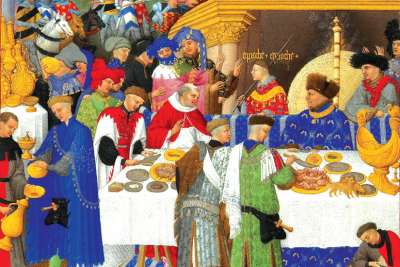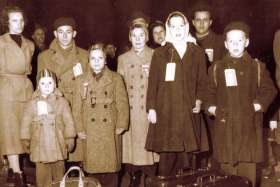Canada’s David Saint-Jacques joined the exclusive club of space explorers when he blasted off to the International Space Station on Dec. 3, almost 46 years after NASA ended the Apollo program that put men on the moon. On Dec. 19, 1972, the last Apollo mission ended with the splashdown of the Apollo 17 capsule. It was an historic achievement, though by this time — after five previous moon landings in three years — the excitement of moon landings was waning. The last moon mission, however, held a deeper meaning for Fr. Harold O’Neill, who was a professor of dogmatic theology at St. Augustine’s Seminary in Toronto. At the time he wrote this for The Register, he was studying at the University of Regensburg in West Germany, where he drew inspiration from a lecture by Professor Joseph Ratzinger, who later became Pope Benedict XVI.
In the winter of 1964, Parliament was a hotbed of debate. With Canada’s 100th birthday just two-and-a-half years away, politicians were busily trying to come to some sort of agreement on a new national flag to replace the Red Ensign. The Great Canadian Flag Debate officially began in June 1964 and after six months of often bitter argument, it finally ended on Dec. 15, 1964 as the Liberals invoked closure, much to the chagrin of Conservative leader John Diefenbaker. Two months later, the new flag flew for the first time, prompting this letter to The Catholic Register editor from an unnamed seminarian at Toronto’s St. Augustine’s Seminary.
Few events in recent Canadian history have had a greater impact than the massacre at École Polytechnique in Montreal. The gunman, Marc Lepine, killed 14 women and injured 14 others in the Dec. 6, 1989 attack before killing himself. His suicide note revealed his hatred of feminists. In the wake of the tragedy, there were changes to gun laws and the creation of an annual national day of remembrance on Dec. 6 to recognize violence against women. Five days following the attack, a funeral Mass for nine of the women was held at Montreal’s Notre Dame Basilica, as reported in The Register:
Toronto parish steps up for Panama World Youth Day pilgrims
By Jean Ko Din, The Catholic RegisterAlicia Escobar was 10 years old when Pope St. John Paul II came to Toronto in 2002 for World Youth Day. She was too young to participate but remembers the excitement, and now she’s looking forward to experiencing that for herself.
Canada has had a long tradition of welcoming refugees looking to escape persecution. One of the most seminal events in that history came in the fall of 1956, when Hungarians revolted against their Communist rulers. They were met with a massive show of force as Soviet tanks rolled through the streets of Budapest and crushed the revolt within days. In early November, thousands of Hungarians began fleeing to Austria. Canada reacted quickly, providing swift approval of refugee claims and within a month they began arriving. Eventually Canada gave asylum to about 37,500 Hungarians and lent support in their first year in Canada. The majority were Roman Catholic, so it’s no surprise the Church played an important role dealing with the new arrivals as this Register story from the Dec. 8, 1956 illustrates.
The Register Archives: A glimpse of the faith, courage of Canada's WWI army chaplains
By Catholic Register StaffThis year, Remembrance Day takes on an extra special aura, as Nov. 11 marks the 100th anniversary of the end of the First World War. Close to 61,000 Canadians lost their lives in the conflict and another 172,000 were wounded. The Canadian Chaplaincy Service was a vital part of the war effort, with close to 450 clergy serving overseas. Among them were 90 Catholic priests who were never far from the front lines. The Catholic Register kept its readers informed with updates from the Chaplaincy Service. The following is the report in the Oct. 31, 1918 issue.
Cardinal Paul-Emile Leger was Canada’s most prominent prelate in the 1950s and ‘60s. Surprisingly, he resigned Nov. 9, 1967 and for the next 24 years, until his death in 1991 at age 87, he dedicated himself to service in the Third World, though he returned to Montreal several times. Here is how he explained his departure in The Register issue of Nov. 18, 1967.














